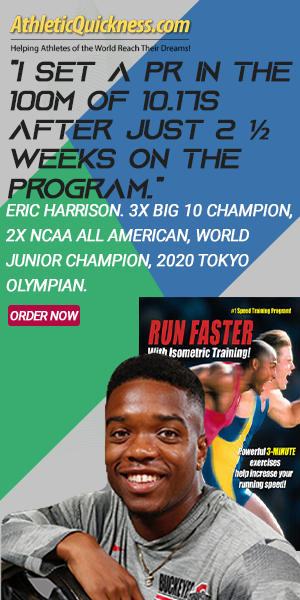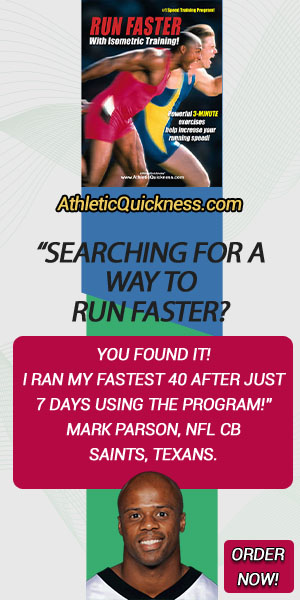Question:
When my older daughter ran she could not avoid frequent serious injury. What should I do to start my younger daughter for running form correctly, that will help prevent injury?
I realize strength in the right muscles would probably support injury prevention. However, it seems like form would have something to do with it also.
Answer:
Great question. Yes, strength and form go together when looking to not only improve speed but also to prevent injury. The last thing you want to do is add power to bad technique since all you will do is reinforce the bad technique.
While our programs don’t teach form/technique, they do help to level out the muscular imbalance found in a lot of athletes that makes them vulnerable to injury in the first place. What I am primarily referring to is the role the hip flexor muscles play in running fast and running smart which is a big part of our speed training program.
For starters, the hip flexors are the only muscles that work in the opposite direction to all others in the body when it comes to running, sprinting and even, walking.
What this means then is that your hip flexor muscles are needed to not only produce enough force to counterbalance that produced by the leg pushing off the ground but also, the forces caused by pumping of the arms and twisting of the torso. Hip Flexors are essentially the pacesetter to all forward movement, but are unfortunately weak in athletes of all ages and skill levels.
So, without strong hip flexors you won’t be able to effectively counter all of the other moving parts in your body with enough force to keep everything functioning at a high level. So, the most obvious effect of this is your running speed will be weaker and slower. This will cause athletes to resort to straining in a desperate attempt to move quicker, however, they won’t have much success if the weak link (hip flexors) is not addressed.
The other effect of having weak hip flexors is an injury to their counterpart, the hip extensors (think upper part of hamstrings) since their contractions won’t be inhibited quick enough to prevent them from going into severe spasm and tearing.
This is perhaps the most common injury athletes run in to and while I don’t know the extent of your oldest daughter’s injury, I wouldn’t be surprised if these were bothersome to her at some point.
So, while having good form is imperative to running your best, it must be met with proper muscular balance otherwise slower speeds and/or injuries will result.
My suggestion to achieving both is to work with a local track coach on form and consider getting our Run Faster program to work on raising the strength balance in the body.
All the best to you and your daughters!
Dr. Larry Van Such






